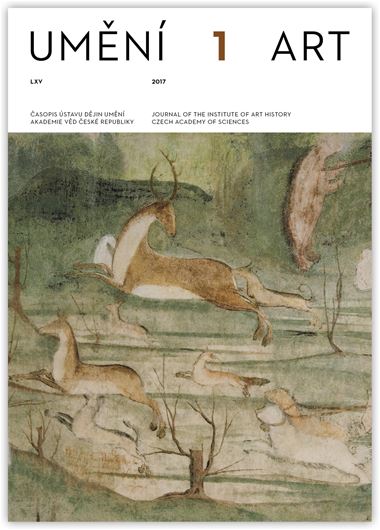Pavel Kalina
The New Solomon: Architecture as the Embodiment of State Ideology and Political Practice in Early Modern Prague
Nový Šalamoun. Architektura jako materializace státní ideologie a politické praxe v raně moderní Praze
pp. 26–36
The Vladislav Hall (c. 1490–1502) in the Old Royal Palace of Prague Castle is well known to modern scholarship and belongs to the icons of medieval European architecture. Despite of this, the complex relationship between its form and its function was never satisfyingly described. Amazing is the fact that the structure was built in the time when the king did not reside in Prague. The Czech king Vladislav from the Jagiellonian dynasty was elected Hungarian king in 1490, and since this moment did not live in Prague but in Buda, the seat of his former rival — the late Hungarian king Matthias Corvinus. I argue that the spatial structure of the Palace represents a fixation of the power structure in the state as it was stabilized in this period of the Jagiellonian rule. The rooms adjacent to the Vladislav Hall were used for sessions of the Land Court (which was since the end of the 1480s the most important judicial institution in the kingdom), of the Chamber Court, and of the Court Tribunal, whereas to the East of the Hall there was the All Saints chapel. The portals leading to the chapel and court rooms were shaped as a hierarchical sequence, accentuating the importance of the sacred space and of the Land Court room as the Land court was in the hands of high aristocracy. At the same time, the double edicule of the room used spiral columns and twisted pilasters, suggesting the king’s role as a new Solomon — the guarantor of peace and justice for the kingdom. The spiral columns of the Solomon’s Temple were represented in a row of artifacts including the illustration from Schedel’s Weltchronik which could be easily accessible to the patrons of the building. As an immediate inspiration could serve the monument to Vladislav’s rival Matthias Corvinus created at the end of the 1480s at Matthias’ castle in Bautzen.
Full-text in the Digital Library of the Czech Academy of Sciences:
https://kramerius.lib.cas.cz/uuid/uuid:d6985b93-d0f5-45b9-8e73-491b70867563
< back

